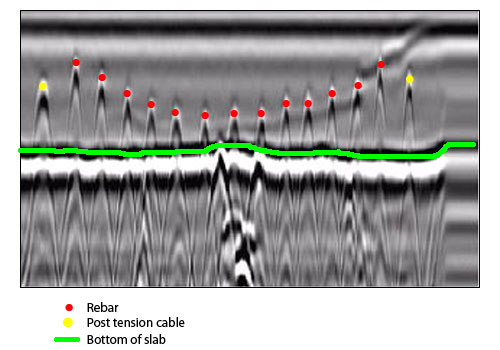Reveal the Transformative Power of Concrete Scanning in Maximizing Efficiency and Security
Concrete scanning has emerged as an important device in the building sector, offering exceptional benefits in enhancing project performance and making certain safety requirements. The transformative power of concrete scanning lies in its capacity to provide real-time information and thorough understandings, changing just how jobs are prepared and carried out.
Value of Concrete Scanning
Making sure the structural honesty and security of construction projects begins with the critical step of carrying out detailed concrete scanning. Concrete scanning is a non-destructive technique used to identify and map subsurface elements within concrete structures.
In addition, concrete scanning aids in enhancing project timelines and budget by avoiding unanticipated costs and delays that might arise due to unexpected blockages within the concrete. Eventually, investing in complete concrete scanning is an aggressive technique that boosts both performance and security in building projects.
Exactly How Concrete Scanning Works
Concrete scanning runs as a crucial device in building and construction tasks by utilizing sophisticated innovations to detect and map subsurface aspects without causing architectural damages. Ground Passing Through Radar (GPR) and Electromagnetic Induction (EMI) are 2 primary approaches utilized in concrete scanning. GPR jobs by emitting high-frequency radar pulses right into the surface area, which get better when they run into subsurface items or gaps. The time considered the signal to return shows the depth and place of the things. EMI, on the other hand, makes use of magnetic fields to determine differences in material make-ups, such as identifying rebar or channels within concrete structures.
Throughout the scanning process, the data accumulated is examined in real-time, allowing prompt identification of potential hazards or challenges below the surface. This info aids in decision-making, guaranteeing that building tasks continue securely and efficiently. Furthermore, 3D imaging software program can be utilized to create topographic maps of the subsurface components, further boosting job planning and implementation. By utilizing these advanced modern technologies, concrete scanning significantly lowers the threat of costly problems and injuries on building websites.
Benefits of Concrete Scanning
One of the main benefits of concrete scanning is the ability to identify and situate embedded objects such as rebar, post-tension cables, and avenues properly. Concrete scanning aids in preparation and making more properly, as it offers exact info concerning the location and depth of structural elements.

Study: Concrete Scanning Success

In an additional situation, a building company made use of 3D concrete scanning to assess the condition reference old concrete structures in a historical structure. The thorough scans provided beneficial understandings right into the degree of deterioration and helped prioritize upkeep initiatives successfully. By proactively attending to areas of worry determined via scanning, the firm was able to prolong the life-span of the framework and guarantee occupant safety and security.
These study highlight the transformative power of concrete scanning in improving efficiency, precision, and safety in building projects.
Carrying Out Concrete Scanning in Projects
Executing innovative scanning technologies during building jobs has become significantly essential for improving precision and security. By integrating concrete scanning into project planning and implementation, building and construction groups can identify potential hazards, such as rebar or post-tension cable televisions, hidden within concrete structures. This aggressive strategy decreases the risk of accidents, hold-ups, and costly rework, ultimately bring about more efficient task timelines and budgets.
To carry out concrete scanning efficiently, project supervisors ought to work together closely with experienced scanning specialists to identify the most suitable scanning methods for the particular project requirements. Involving scanning specialists from the onset of a project makes it possible for the group to create thorough scanning strategies that attend to key locations of problem and make sure comprehensive data collection.
Additionally, incorporating concrete scanning right into normal project workflows can improve decision-making procedures, as real-time scan information provides prompt understandings into the condition of concrete frameworks - Concrete Scanning. This data-driven strategy facilitates informed analytic and makes it possible for teams to make adjustments immediately, fostering a society of effectiveness and safety throughout the task lifecycle

Verdict
In conclusion, concrete scanning plays an essential role in boosting effectiveness and safety and security in building and construction jobs. By making use of innovative innovation to map and identify out underlying frameworks within why not check here concrete, this procedure helps to avoid costly mistakes, guarantee architectural honesty, and lessen dangers on website. With the ability to discover concealed elements and supply exact information, concrete scanning proves to be a beneficial tool for enhancing project results and taking full advantage of overall success.
Concrete scanning is a non-destructive technique made use of to discover and map subsurface elements within concrete frameworks. Additionally, concrete scanning aids in optimizing job timelines and my review here spending plan by preventing unanticipated expenses and delays that may emerge due to unexpected blockages within the concrete. One notable instance research study entails a large remodelling task where concrete scanning played a critical role in ensuring task success.In one more instance, a building and construction firm utilized 3D concrete scanning to analyze the condition of aging concrete frameworks in a historical structure. By integrating concrete scanning into task planning and execution, building groups can determine prospective risks, such as rebar or post-tension wires, concealed within concrete frameworks.